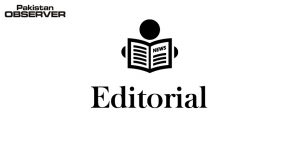TEXTILE sector is our largest exporter. According to government’s own figures, sixty percent of Pakistan’s total exports are related to textiles.
However its share in the global textile market is mere 1.8 percent, mainly because unfortunately no attention was paid by previous regimes to boost its capacity.
Finally because of some important interventions made by the present government including reduction in energy tariffs and payment of refunds, it appears that finally this important industry is on the upward trajectory.
Taking a step further, the government has now also approved a five year textile policy.
Sharing its main features at a news conference on Wednesday, Adviser on Commerce Razaq Dawood said under the policy, the textile industry will be given internationally competitive gas and electricity tariff, apart from some other incentives.
In our view, the policy will give clarity to the textile industry for the next five years and accrue immense benefits in terms of new investment, technology transfer, automation, job creation and above all enhanced exports.
The previous two textile policies 2009-14 and 2014-19 had allocated incentives worth Rs188 billion and Rs65billion to achieve the export targets of $25bn and $26bn.
Both the policies failed to raise the exports as only a fraction of the amount set aside for interventions was actually spent.
Hence, there should not be any dillydallying in the implementation of this policy which should be implemented at the earliest.
In the last few months, the industry has been operating at its full capacity as the American and European buyers had diverted their orders to Pakistan since it lifted the virus restrictions much earlier than Bangladesh and India.
The incentives offered in the policy will only give further impetus to the textile industry to further pursue the course of value addition and help bolster its exports significantly.
The export oriented industry must be given gas and electricity on a priority basis besides ensuring they get the required raw material well in time to ensure that all the orders received by them from abroad are completed well in time.
This is important to maintain the confidence of the buyers of our products.










